
The cost to add a bedroom and bathroom can pay off with an increase in your home’s value and more space for you and your family. Costs vary by project scope.
Give these faucet choices a hand


Single-handle faucets have one handle that mixes hot and cold water.
Hot and cold water each have a dedicated handle in double-handle faucets.
Single faucets look modern, while double faucets are more traditional.
Single-handle faucets are best for small sinks and help save space.
Double-handle faucets allow for precise temperature control.
One handle or two? When choosing a new faucet, deciding between a single-handle versus a double-handle faucet is one of your biggest decisions. Both have distinctive benefits and drawbacks and have a place in modern bathrooms and kitchens. We cover key differences, pros and cons, and ultimate winners in several categories.
Refreshing your bathroom on a budget? A fresh coat of paint, DIY shelving, or a new faucet are simple and inexpensive ways to improve your aesthetic.
Three main differences between single-handle faucets and double-handle faucets are design, function, and installation. Single-handle faucets have a modern design, you can operate them with one hand, and they’re easier to install because they require just one or two sink holes for a spout and handle combination unit or a separate spout and handle.
On the flip side, double-handle faucets have a more traditional look. They require two hands to turn on the hot and cold water, so installation and maintenance can be more extensive. Regardless of your choice, local faucet installation companies can help you find the right faucet.
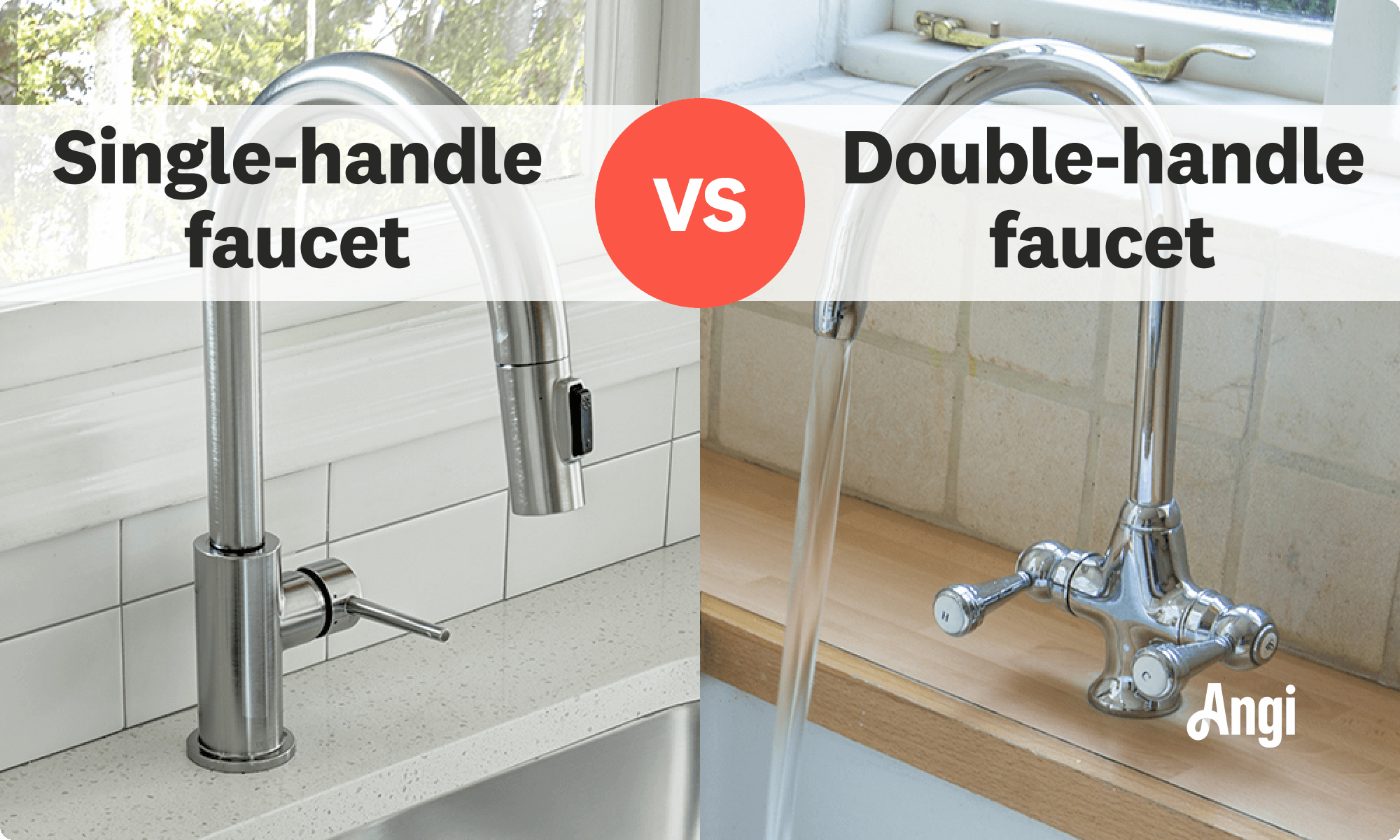
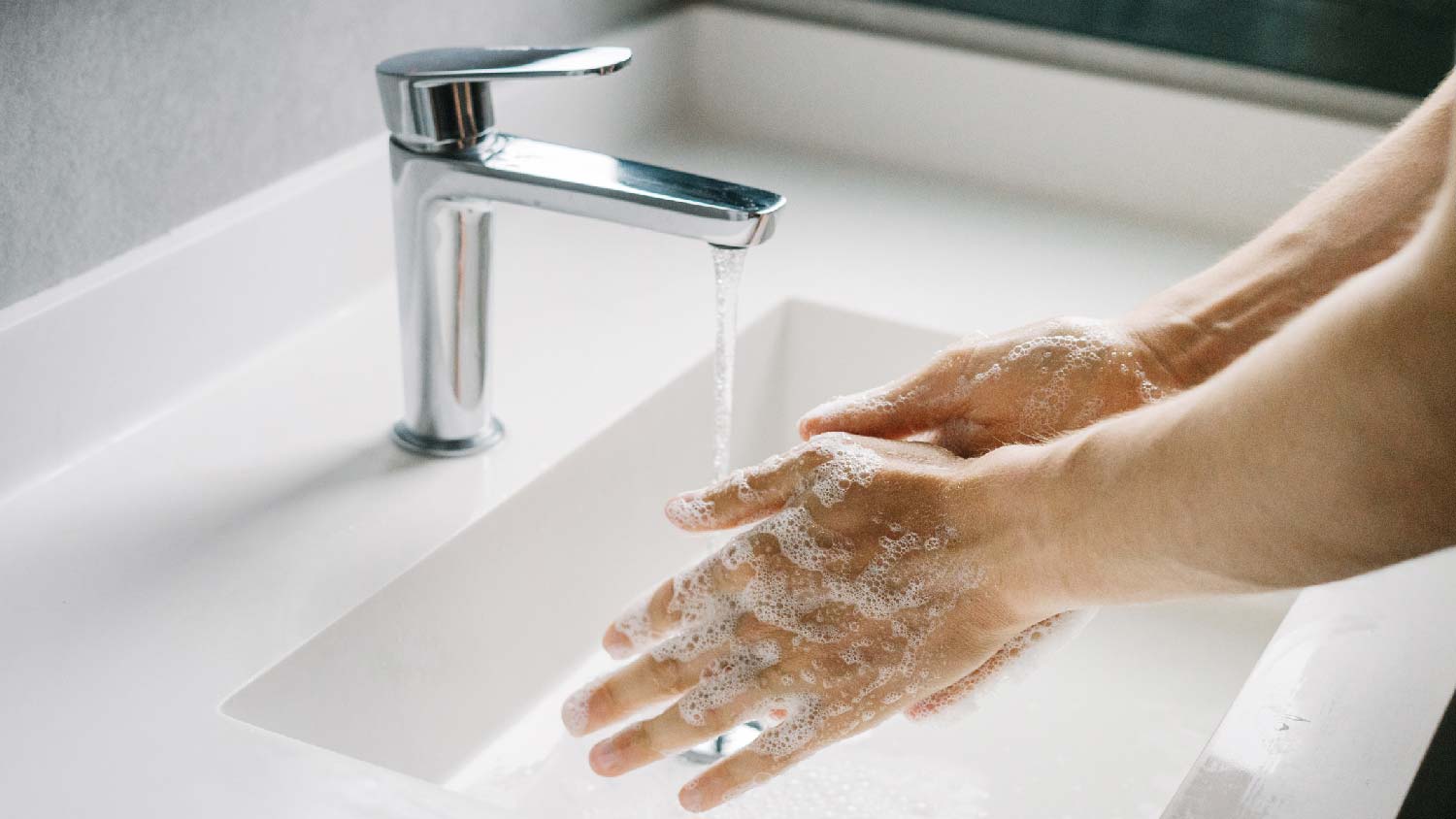
Single-handle faucets have one handle that operates the hot and cold water. Often, that handle is attached to the spout in a single combination handle-and-spout unit, but sometimes, the spout and handle are separate pieces. When you change the handle position, the two streams of water combine to the desired temperature, and the stream of water comes out of a single faucet.
| Pros | Cons |
|---|---|
| Modern, streamlined look | Can leave open sink holes if you’re changing out a double-handle faucet |
| Compact design | Harder to adjust the temperature |
| One-handed operation | Leaks require shutting off both valves |
| Easier to install, clean, and maintain |
Best for:
Small sinks, basin sinks, and tight spaces
Sinks with a single faucet opening
Ease of use
DIY and simpler installation
Individuals who prefer less cleaning and maintenance
Single-handle faucets can look more sleek and contemporary. They also take up less space, so they’re a great fit for smaller bathrooms, smaller sinks, bathtub faucets, or modern decor. The single handle also means easier use—if your hands are dirty, you can turn them on with one hand or an elbow.
These faucets are also easier to install. Some models require one hole for the faucet and one for the handle, and single-piece units only need one opening. The simple design is easier to keep clean, and they have fewer operating parts than double-handle faucets, so fewer things can go wrong.
If your current sink has a double-handle fixture with separate handles and faucet openings, switching to a single faucet can be challenging because it can leave an extra opening or two on the sink or vanity. In that case, you’ll need to seal unused holes or buy a wider-based faucet to conceal them.
The single handle can also cause users to struggle to get the desired mix of hot and cold water. Likewise, because the handle controls both hot and cold water, if there’s a leak and you need to turn off the water, you won’t be able to use the faucet until it’s repaired.
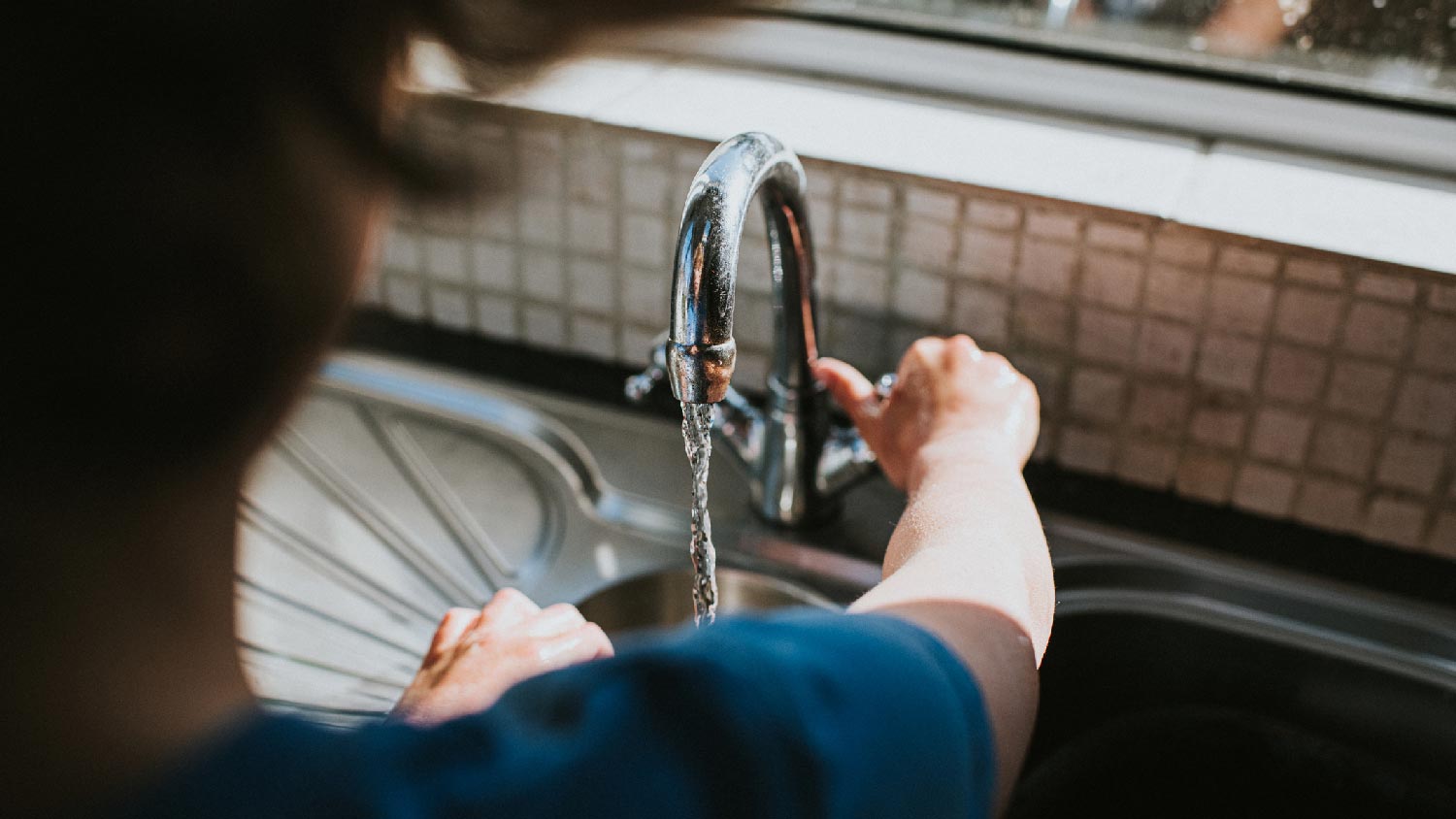
Unlike single-handle faucets, which have only one handle for controlling water flow and temperature, double-handle faucets have two separate handles for water temperature control—one for hot water and one for cold water. To get the desired temperature, you turn both handles to mix the water coming out of the faucet.
| Pros | Cons |
|---|---|
| Classic, elegant look | Often requires 2–3 installation holes |
| Precise temperature control | More components to clean |
| Leaks only require shutting off one handle | Requires two hands or two motions to turn on |
| More substantial size | Children can struggle to operate |
| Adds visual balance | Can cost more |
Best for:
Rooms with traditional decor
Sinks with precut double-handle holes
More precise water temperature control
Larger sinks, vanities, and bathrooms
Visual balance
Choose a faucet with double handles if you want a classic faucet that gives a more substantial look to sinks and vanities. Dual handles allow for more precise temperature control than single handles can offer. If you have a leak or trouble with the hot or cold water, you can turn off one handle and use the other.
The most obvious negative is that most double-handle faucets require two to three installation holes—one for each handle and one for the faucet. The larger size can also increase the cost to replace a bathroom faucet.
The more complicated design can be more challenging to keep clean, and more components can break. Because of the dual handles, you need two hands or two motions to turn both on, which can be harder with messy hands. Children may also struggle with the two handles, posing a burn risk.
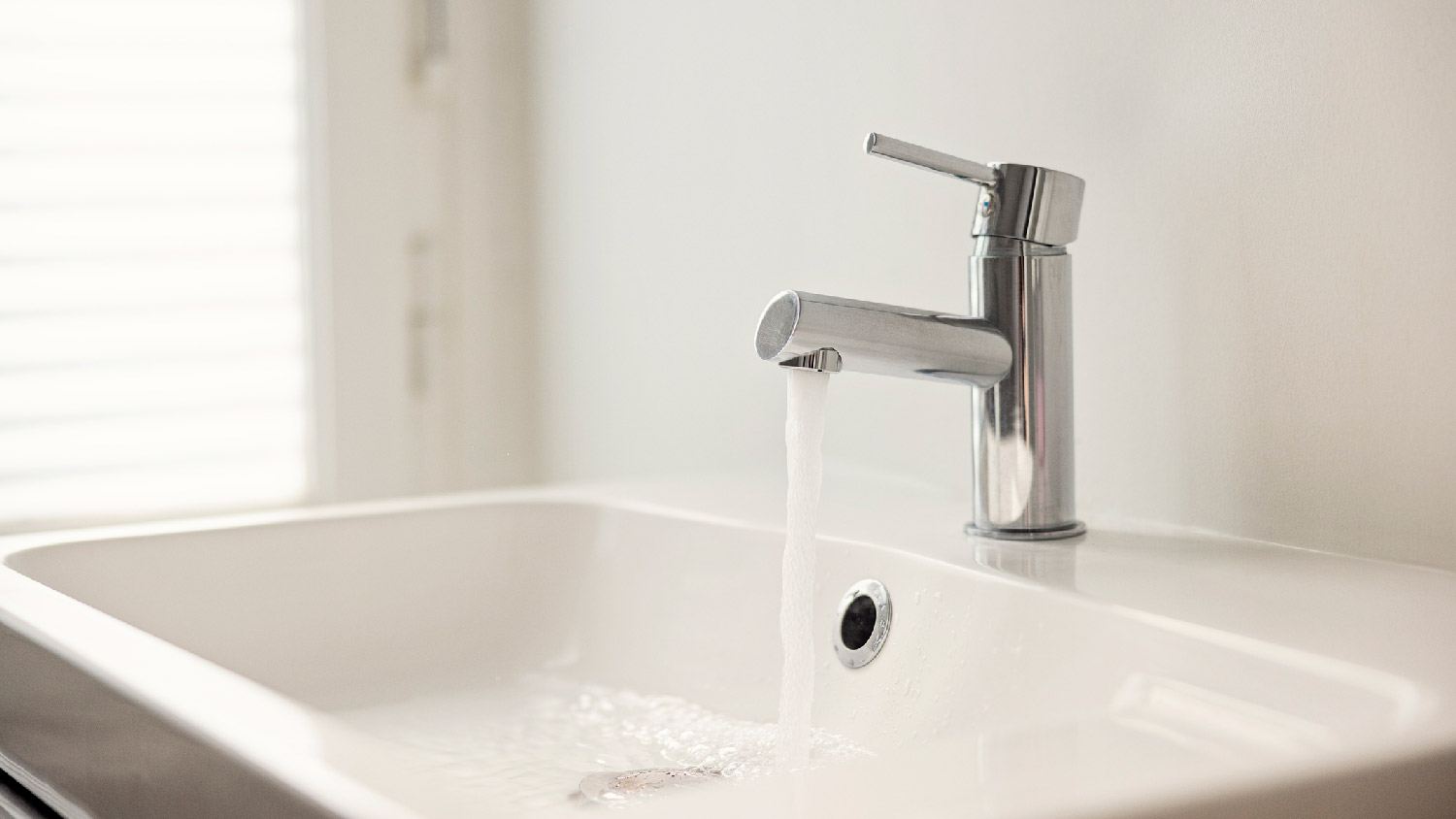
Now that you know the pros and cons of each, let’s look at which faucet has an edge in the following head-to-head categories.
Not all bathroom faucets are the same size. Single-handle fixtures reign supreme if you have limited space for a faucet, such as on a smaller sink or vanity. They’re compact and look great in small spaces. That said, double handles might be better if you have a larger sink or room for a sprawling faucet like a wall-mounted faucet.
Aesthetic preferences are purely personal. Depending on whether you prefer a modern or traditional look, either type of fixture can work. Think about the size and type of sink and how each faucet will look on your sink and in your room. Test out one of each to see what looks best if you can’t immediately decide.
Single-handle faucets are easier to install, as most are a single unit or have one handle and one water faucet. Choosing a single-handle fixture will simplify the process if you need to drill a new hole in your sink or countertop. However, if your sink or counter already has holes for a double-handle faucet, replacing it with a double-handle fixture can be easier.
Because they’re smaller and simpler than double-handle faucets, single-handle fixtures tend to be less expensive. The brand, type, style, faucet finishes, and material will impact the cost, so shop for a quality faucet that meets your needs and budget.
With fewer surfaces and working parts, single-handle faucets are almost always easier to keep clean and maintain than double-handle fixtures because there are fewer parts that can break and fewer parts to clean.
While single-handle faucets took most of the categories above, your choice might not be simple. Depending on your personal preferences, home design, sink, and other factors, either fixture could be right for you.
From average costs to expert advice, get all the answers you need to get your job done.

The cost to add a bedroom and bathroom can pay off with an increase in your home’s value and more space for you and your family. Costs vary by project scope.

Remodeling your bathroom can add significant value to your home. Your bathroom remodel cost in Atlanta, GA will depend on size, fixtures, materials, labor, and other factors.

Forget the spa. Steam showers bring the luxury right into your home. This guide will help you budget steam shower costs—no matter the specs.
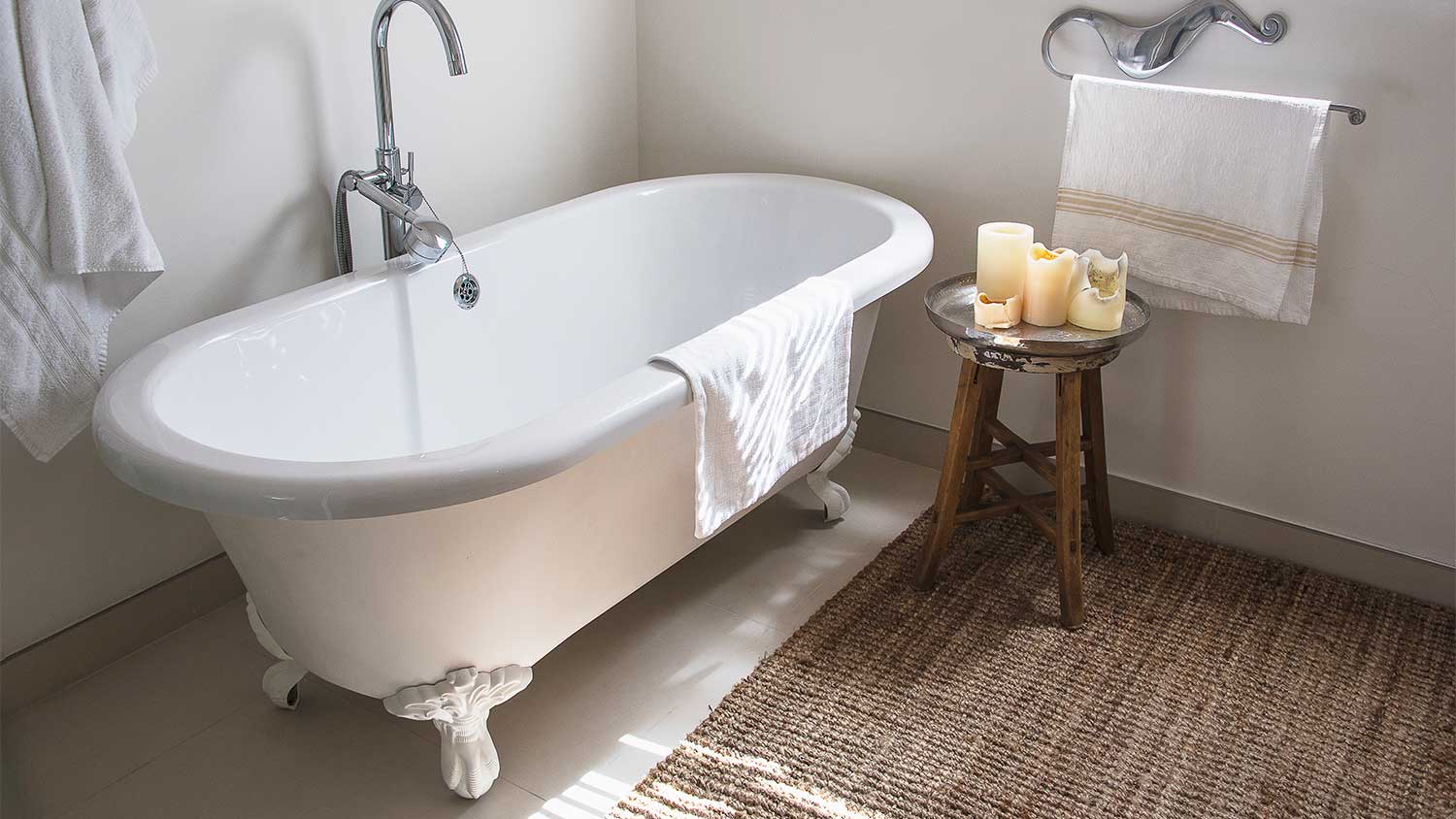
An updated bathtub can give a bathroom a whole new look. Find out how much it costs to replace a bathtub in Seattle, WA, including prices by type and labor costs.
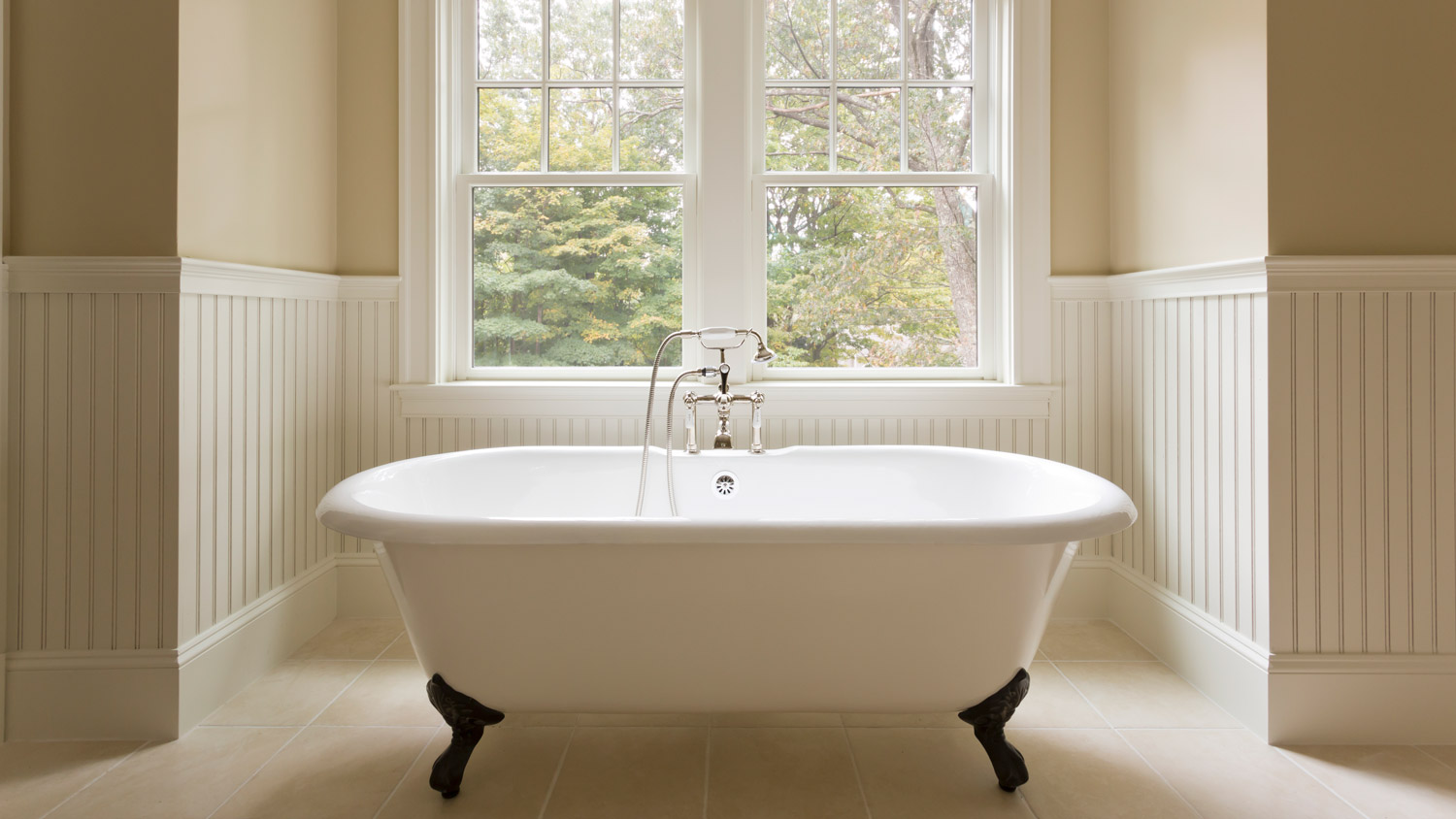
An updated bathtub can give a bathroom a whole new look. Find out how much it costs to replace a bathtub in San Francisco, CA, including prices by type and labor costs.

Undermounted sinks are elegant upgrades to any kitchen and can add to your home’s resale value. But are they the best option? Here we’ll learn the pros and cons of having an undermount sink.